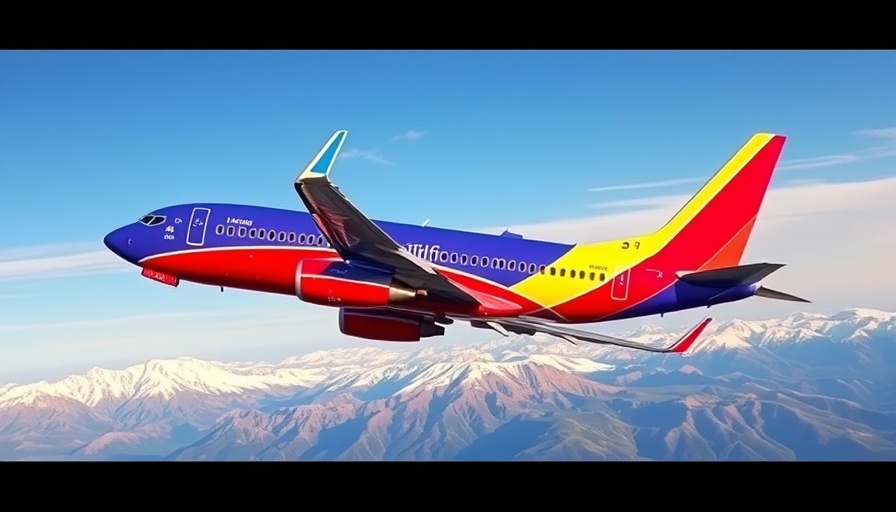
Shifting Fare Paradigms: Southwest's New Structure Explained
In a drastic move that mirrors trends within the airline industry, Southwest Airlines has unveiled a revamped fare structure that promises to alter the flying experience for both loyal customers and casual travelers. As of April 28, 2025, the airline will no longer adhere to its long-standing open seating policy, introducing a tiered fare model that will require some passengers to pay extra for seat selection. This change signifies not only a shift in operational strategy but also raises questions about customer satisfaction and loyalty amidst evolving airline practices.
Who Benefits from the New Southwest Fares?
Southwest's newcomers to the fare game include new benefits for Rapid Reward Elite status holders and Southwest credit cardholders. This reward structure is designed to maintain the value proposition for its most loyal customers, ensuring that they will enjoy benefits that offset some of the potential downsides of the new fare classes. These members will have priority boarding, special offers, and the ability to select seats without additional charges, a faithful heart warmer for Southwest's devoted customer base.
The Impact on Casual Travelers
While loyal customers may find a silver lining, casual travelers are faced with new financial implications. As Southwest introduces additional charges for seat selection, routine flyers may find themselves faced with a covert price hike on their air travel experiences. Industry experts warn that this could alienate a segment of the customer base that previously valued Southwest for its transparent pricing structure, free checked bags, and a no-frills flying experience.
Historical Context: The Evolution of Airline Pricing
For a long time, low-cost airlines like Southwest distinguished themselves from traditional carriers with straightforward pricing models where all services, including seat selection, were at no extra cost. However, as competition increases and operational costs rise, many airlines are reconsidering their fare structures. Southwest now joins the ranks of airlines that have implemented such changes, shifting towards a system that reflects the evolving norms of the broader industry where ancillary fees have become the norm.
Predictions: Where do Airlines Go from Here?
As the industry continues to evolve, it's imperative to consider how this shift might signal broader trends within air travel. As airlines streamline expenses while attempting to maximize revenue, further changes in service that maximize free options may become less commonplace. Industry watchers suggest that other carriers may follow Southwest's lead, increasing pressure on consumers to reconsider their loyalty to fare structures based on pricing alone.
Adapting Strategies for Business Travelers
For small business owners and managers, adapting to this new fare landscape is essential. Being aware of the benefits associated with elite status or credit card options can potentially mitigate costs for frequent flyers. It may be worthwhile to explore the relationships between specific business travel needs and the respective rewards programs available, thereby ensuring any travel budgets remain intact.
Making Informed Decisions: Steps Forward
To ensure savvy decisions in this brave new fare world, businesses should consider implementing strategies such as evaluating travel frequency, price sensitivity, and potential membership in loyalty programs. By analyzing travel patterns in relation to fare structures, small business owners can create an informed travel policy that considers financial impacts while continuing to promote growth.
Seeking Clarity: Frequently Asked Questions
As travelers navigate these changes, it's crucial to clarify common concerns. How will these fare changes affect my overall travel costs? What benefits can I access as a Southwest Rapid Rewards member? Understanding the specific aspects of Southwest's new fares can significantly influence travel decisions moving forward.
The Bottom Line: Embracing Change for Strategic Growth
Understanding these fare changes is crucial for anyone involved in business travel. With new options come new challenges, and adapting to these changes with informed strategies will help small business owners thrive in the competitive landscape. Those who can leverage elite statuses and travel benefits will likely emerge unscathed, while others may have to reevaluate their travel habits.
These shifts are not merely changes in pricing; they signal a transformation in what it means to fly with loyalty. As businesses start planning their next trips, they would benefit from delving into the specifics of these fare structures to ascertain the best routes for their travel expenditures. Take advantage of travel benefits now to streamline future trips and save on costs.
 Add Row
Add Row  Add
Add 




Write A Comment